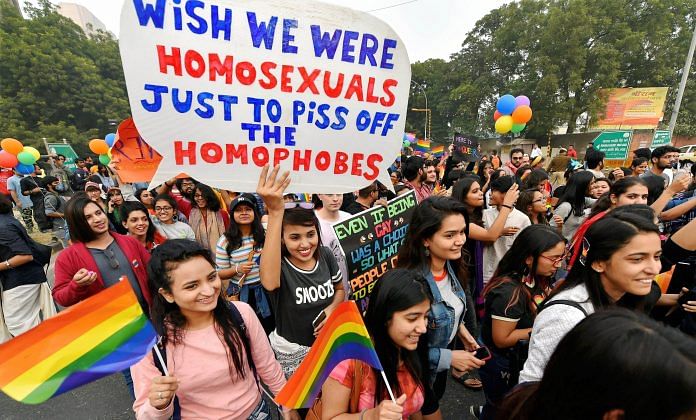The pride parade is not a place to express excesses or fantasies without understanding the context. It is not a circus displayed for pleasure.
Most of us do not know about the violence, the struggle, and the horrors written on the margins of history, like that of the pride parade.
It all started with the Stonewall Rebellion of 1969 in New York City, a violent and spontaneous protest against police raids, spearheaded by the queer community.
American society in the 1960s was undergoing tremendous change, and was being challenged. The Civil Rights Movement, the Bohemian-hippie counter culture, and the protests against the Vietnam War meant the basic tenets of American life were being confronted.
Queer citizens fought for their right to public spaces and safe corners in the city. It was a revolution, but 48 years after Stonewall, the sexually marginalised are still trying to find spaces and acceptance from society.
The first pride parades were held in 1970 to mark the one year anniversary of Stonewall cross America. Soon, these marches would be held the world over. Over time, the cause evolved from commemorating Stonewall to reclaiming public spaces and emphasising visibility.
Like most enthusiastic college-goers, my friends and I joined the Delhi Pride Parade last year because we considered ourselves allies to the cause. What most of my friends and I also did was take photographs of ourselves participating, so we could get brownie points on social media. This year, however, I wondered if we were doing enough?
Pride parades should not be about cis-people (cis meaning people who choose to identify with the biological sex they were born with) enjoying a day out in our brightest colours and stereotypical understanding of what queer dressing looks like. Neither is it about turning up for one day of the year.
The parade is not a place to express our excesses or fantasies without understanding the context. It is not a circus displayed for our voyeuristic pleasure.
The day after the parade, we are back to our comfortable existence, and unknowingly sanitising the public spaces we tread in from any visibility of excess. We are silent listeners to homophobic, transphobic jokes by our peers, silent spectators to hijras being pointed and gawked at on the roads, and judgemental about of public displays of affection.
How do we change?
We need to understand that pride parades are not only cultural events, but deeply political ones. Pride rattles the very base of our patriarchal, heteronormative society. That, apart from “dressing up” and wearing carnivalesque masks, we must also talk about Section 377, the harassment of the queer by every institution, be it the police, schools, colleges, or our neighbours.
Pride is also a space where we must mingle, understand, and not exoticise. Rather than hang out with the same three friends we came to Barakhamba Road with and leave when our token progressive quota is fulfilled, why not use this as an opportunity to meet people who challenge our parochial world view?
Most importantly, let us not steamroll with our privileges, the queer community’s plea for visibility and legal recognition. The Delhi Pride Parade has completed 10 years, but it will take decades more to undo our daily subjugation of the community.



